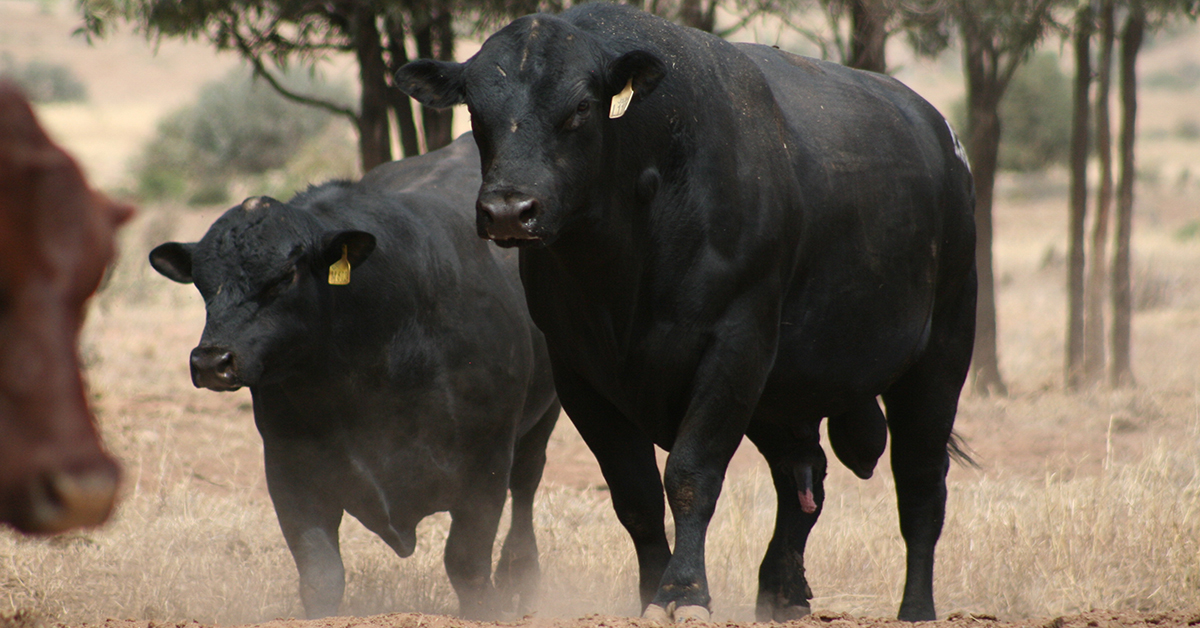Breed Average, Not So Average


The premium received for Angus cattle is often nominated as the motivating factor to utilise Angus genetics in commercial operations. However, market premiums are only part of the Angus package. Considering the significant amount of genetic gain being made by the breed, are there less tangible production gains being made as a result of genetic gain that are influencing profit in commercial operations? If so, how do we quantify them and just how much value do they represent to the commercial producer?
To answer these questions, Angus Australia approached Bush AgriBusiness who conducted comprehensive modelling, using their industry benchmarking data to simulate the use of Angus genetics in key beef producing regions. The findings illustrated that the average genetic improvement being achieved by the Angus breed is significant enough that ‘breed average’ bulls have the potential to drive an increase in profits in commercial operations across Queensland’s Central West and Southern Inland, as well as the Northern Tablelands.
The report identified the impact on profit that, based off the genetic improvement the Angus breed is making on average and the gains in productivity they represent, can have in comparison to the more tangible market premium associated with Angus cattle. The results suggest that 88% of profit increases, detailed in the table below (Table 1), in a pure-bred slaughter, feeder or trading enterprise across all three regions are attributable to genetic improvement – particularly through genetic gain in weight (kg). Meanwhile, market premiums were responsible for approximately 12% of the increase in profits.

In cross breeding scenarios, profit gained through genetic improvement remained the dominant driver, accounting for an average of 60% the increase in profit, while hybrid vigour accounted for 37%, on average. Market premiums in cross breeding scenarios were significantly less for Angus-Brahman crosses, as modelled in the Queensland scenarios, attributing just 1% to the increase in profit. The Angus-Hereford cross breeding scenario modelled for the NSW Northern Tablelands saw market premiums contribute 7% to the increase in profits for the region, across all scenarios.
So just how much genetic progress is the Angus breed making?
Over the last 20 years, Angus heifers are on average 15kg heavier at 200 days of age, 34kg heavier at 400 days and 48kg heavier at 600 days. Meanwhile, Angus bulls are on average 12kg heavier at 200 days of age, 17kg heavier at 400 days and 34kg heavier at 600 days. This represents impressive progress and is reflective of selection priorities implemented in many operations, but is also significantly influenced by environmental factors and the progress being made in other facets of the production environment. It begs the question, what is the genetic progress underpinning this increase?
Looking at average Estimated Breeding Values across the breed over the same time period, the trajectory is relatively similar, with an increase of +20kg for 200 day weights, +34kg for 400 day weights and +43kg for 600 day weights.
Gestation length EBVs for the breed are now on average -2.5 days shorter than 20 years ago and have helped to accommodate the upward trajectory of growth by partially offsetting birth weight, which is highly correlated with the other growth traits (200, 400 and 600 day weight as well as Mature Cow Weight).
Breed average birth weights have remained relatively constant – with actual birthweights sitting at the same level as they did 20 years ago. Genetically, EBV averages are now below that of 20-years previously and are trending lighter.
Carcase weight average EBVs have increased over the 20 year horizon from +39kg to +65kg, with phenotypes reflecting this trajectory. Underpinning the phenotypic increase in IMF in Angus carcases is the average EBVs for the breed more than doubling to +2.2%.
The modelling conducted by Bush Agribusiness showed that the pace of genetic progress over a medium to long-term period was shown to be as important to financial results as the inherent differences in productivity between Angus and non-Angus scenarios. Sensitivity analyses demonstrated that modest improvements in phenotypic trends (rate of change over time) produced a profitable outcome, even when there was no productivity difference with ‘non-Angus’ scenarios and the difference in price received for the ‘Angus/Angus X’ scenarios was half that of the regional norms.
The implications of these findings are that commercial producers can benefit from sourcing genetics that are improving as rapidly as possible, particularly in traits of economical and environmental importance to their production system. The Angus breed are collectively doing so at a rate that has profitable outcomes for commercial producers. By selecting for breed average or greater, greater genetic gain can be achieved, further enhancing profits.
For more information on ‘Profiting from Angus Genetics in Commercial Herds’ please access the report on the Angus Australia website.